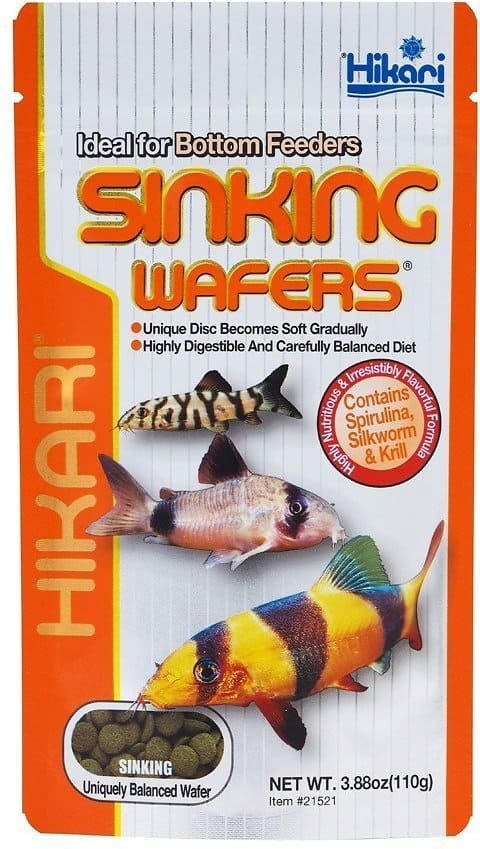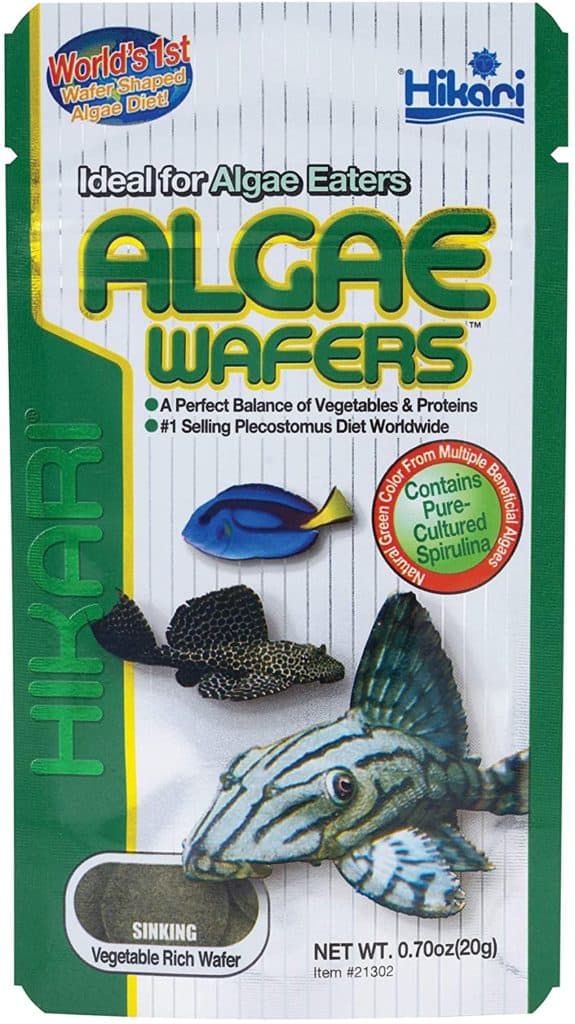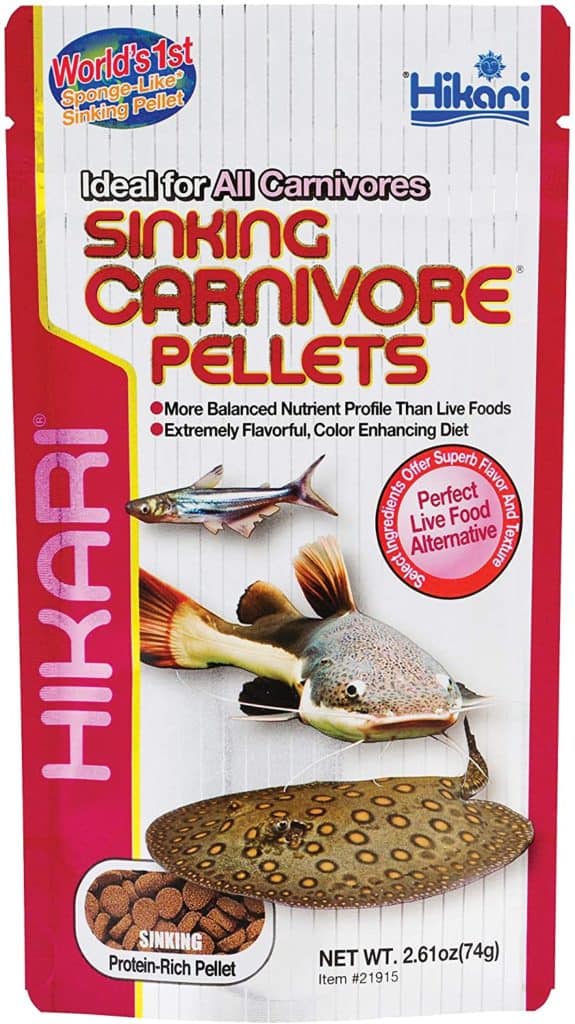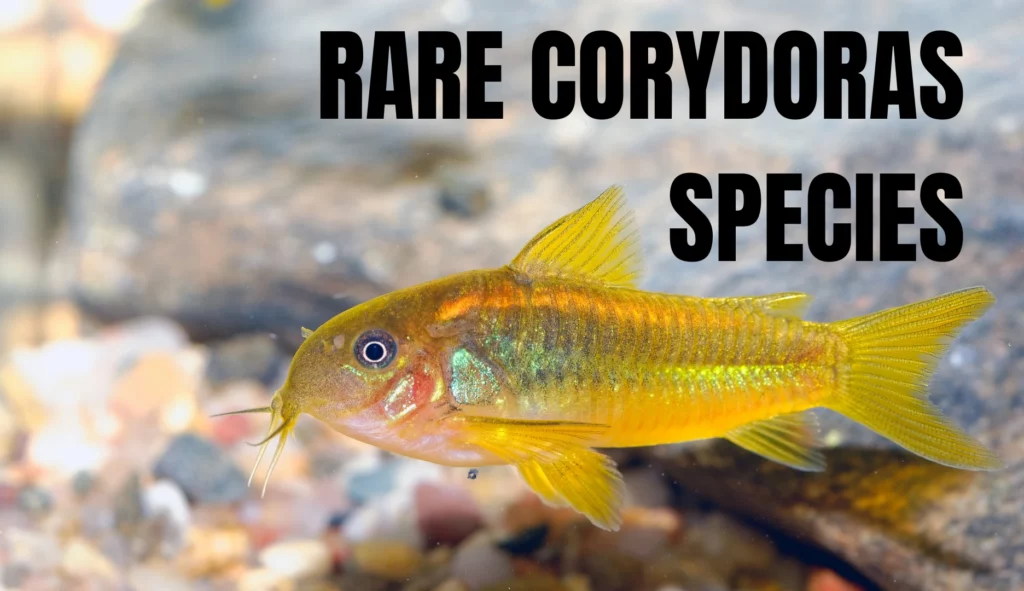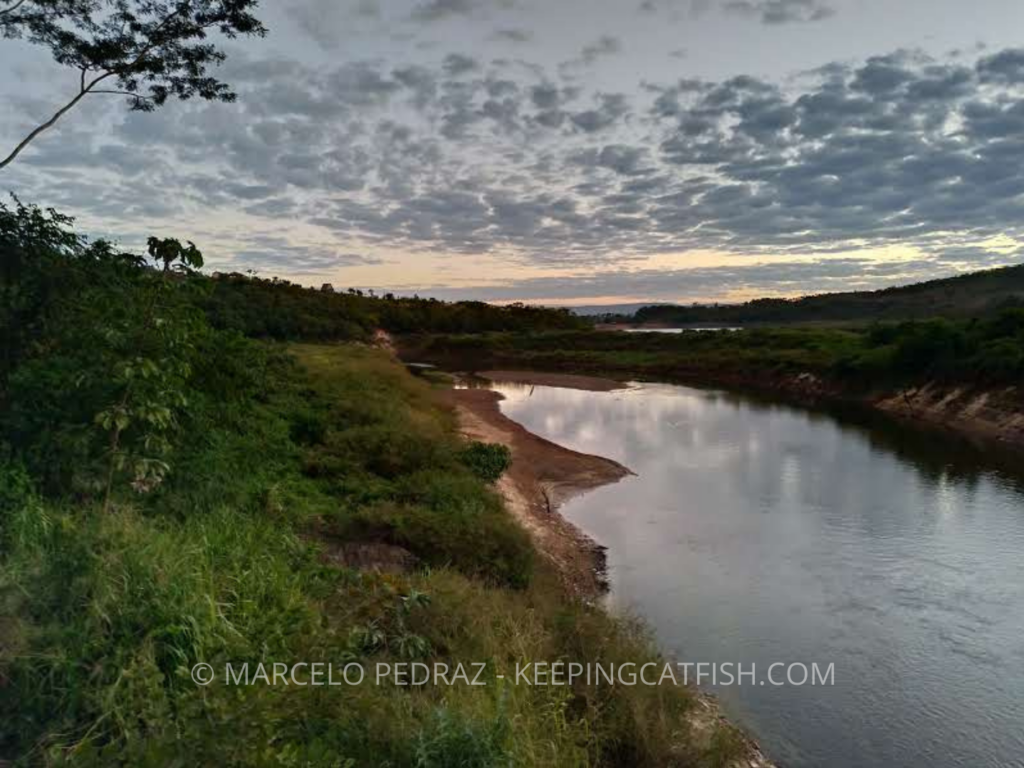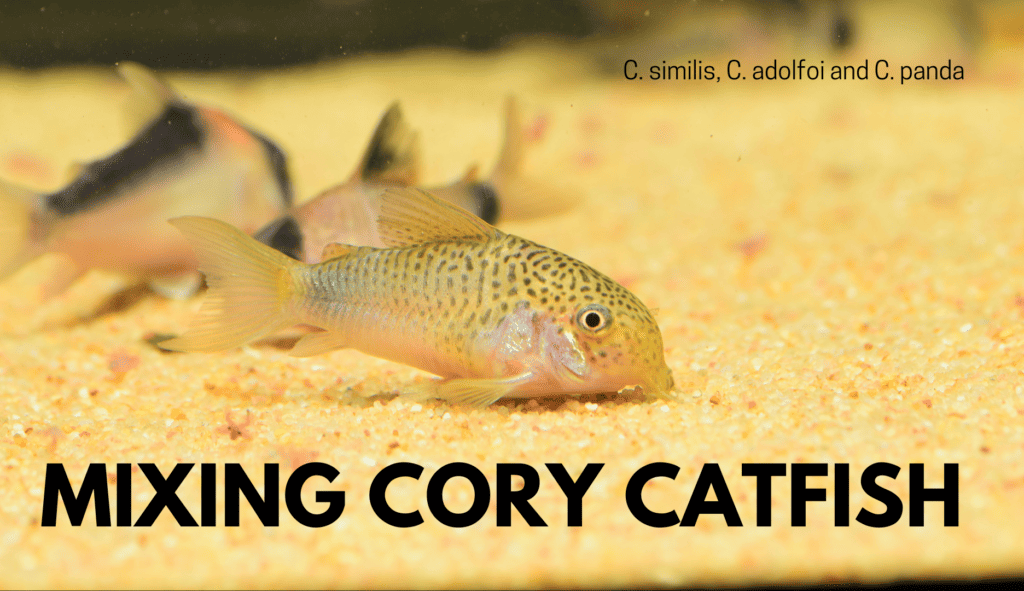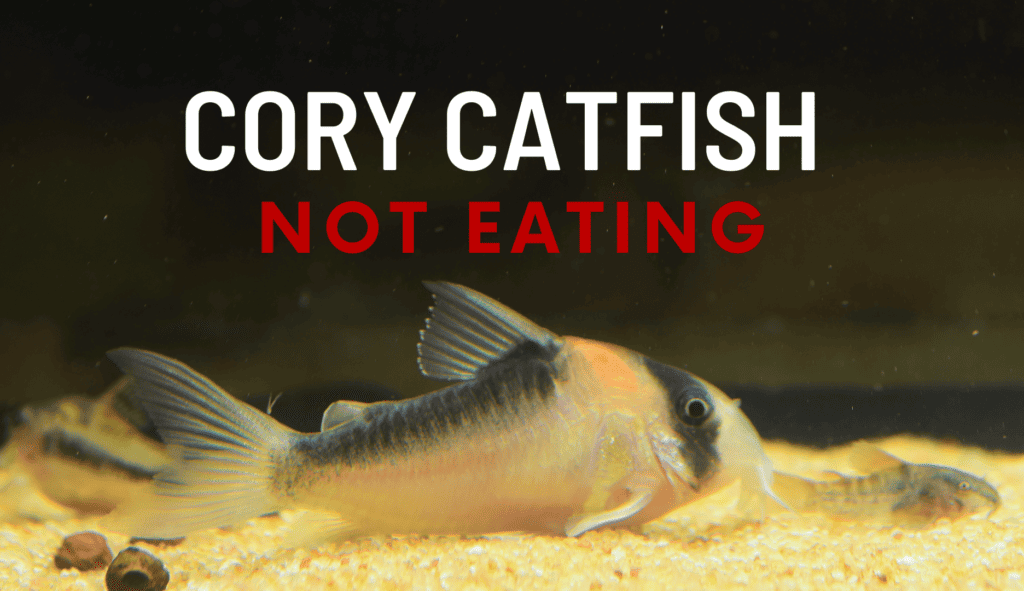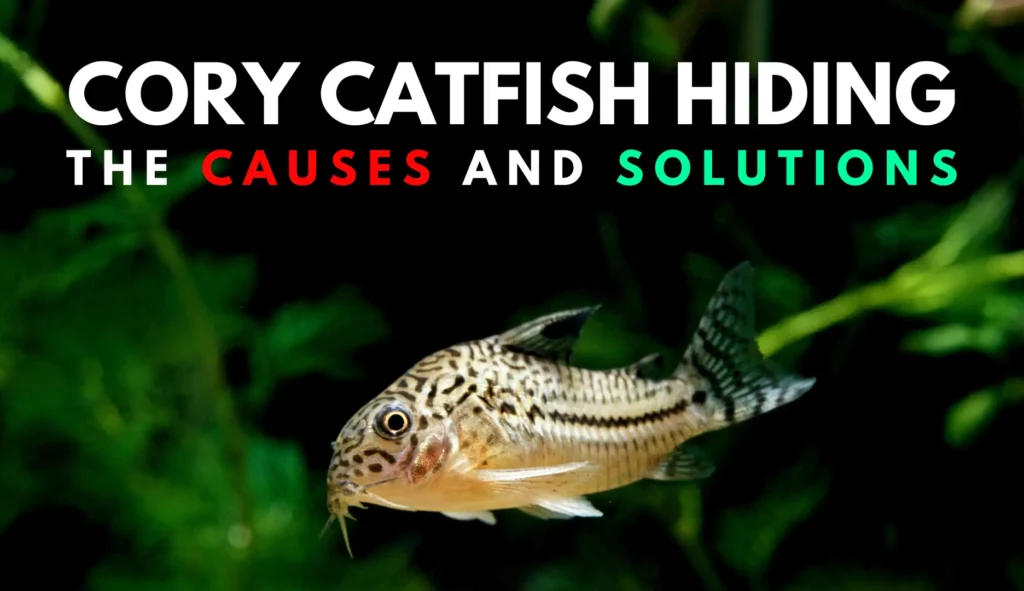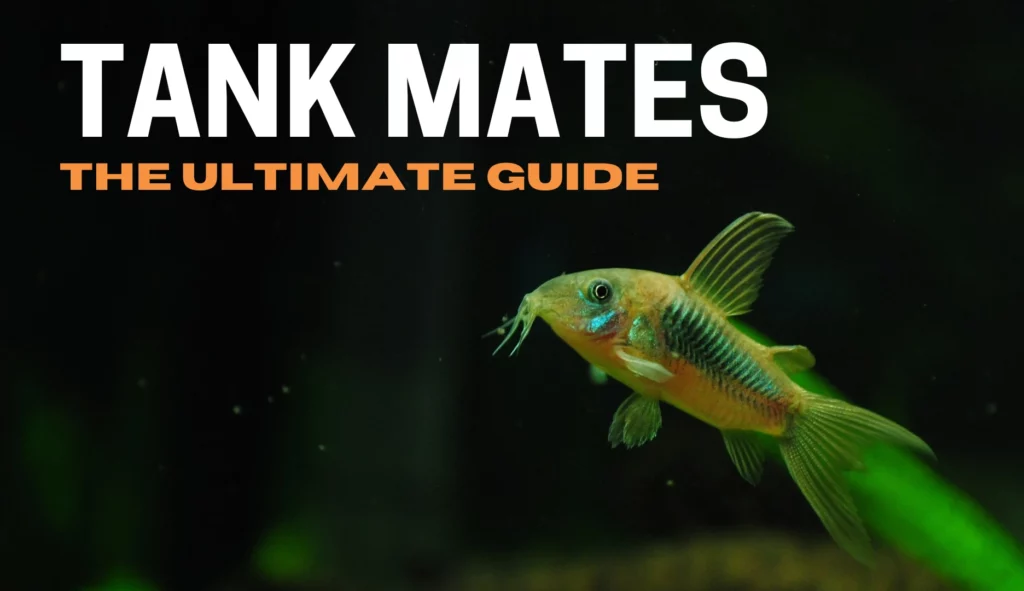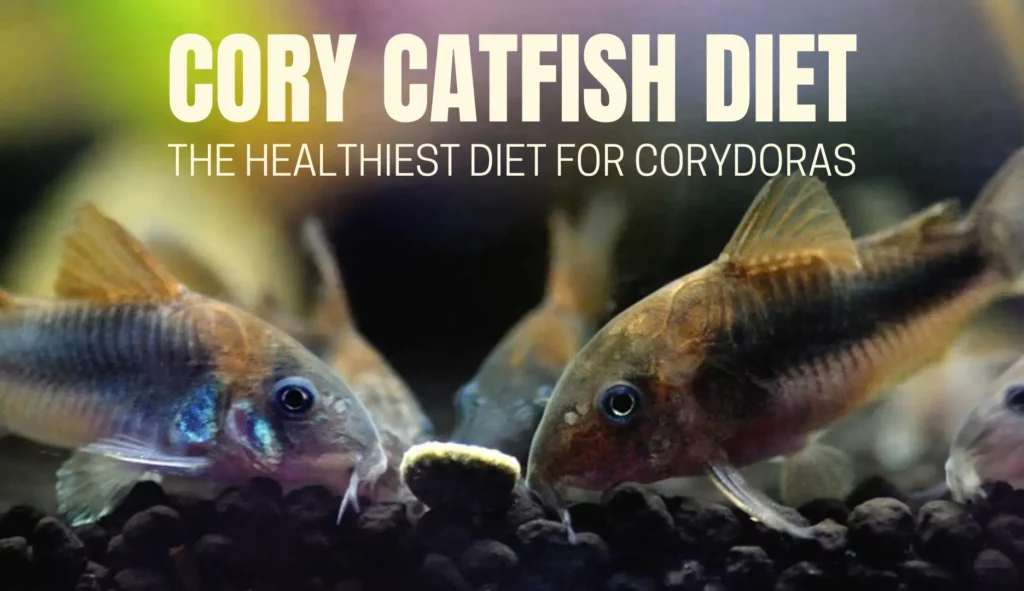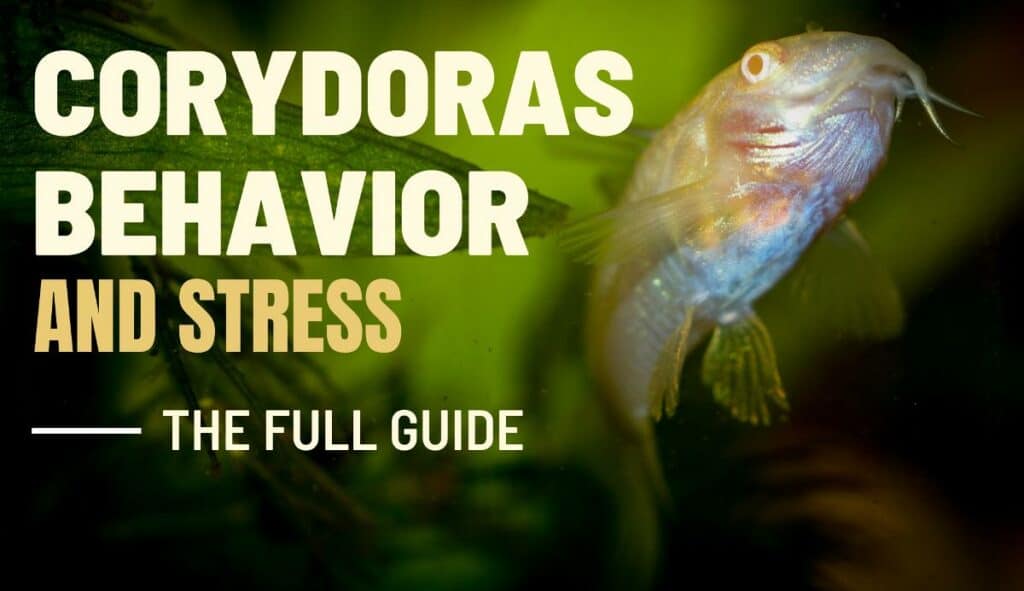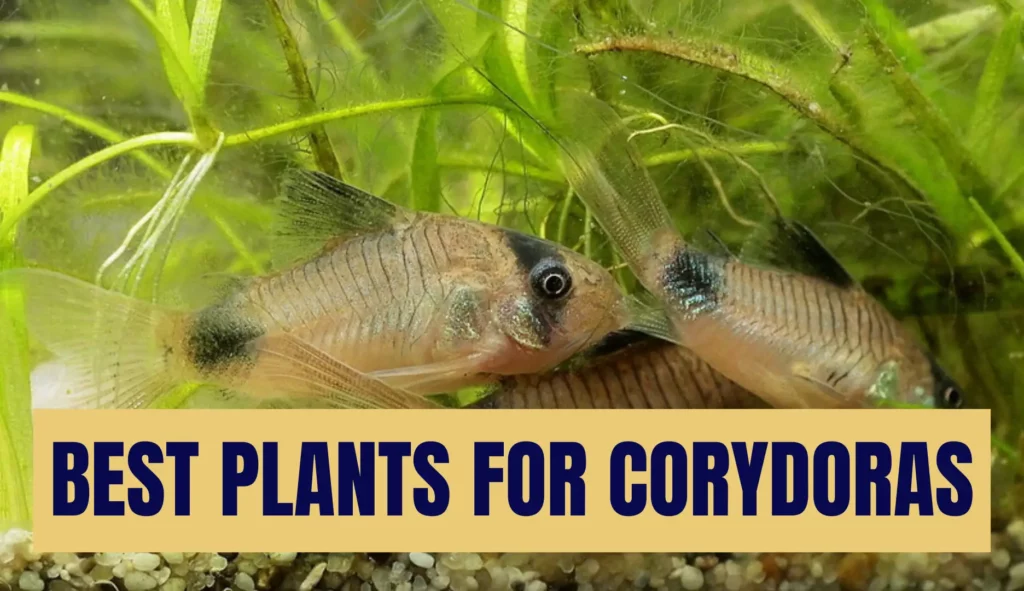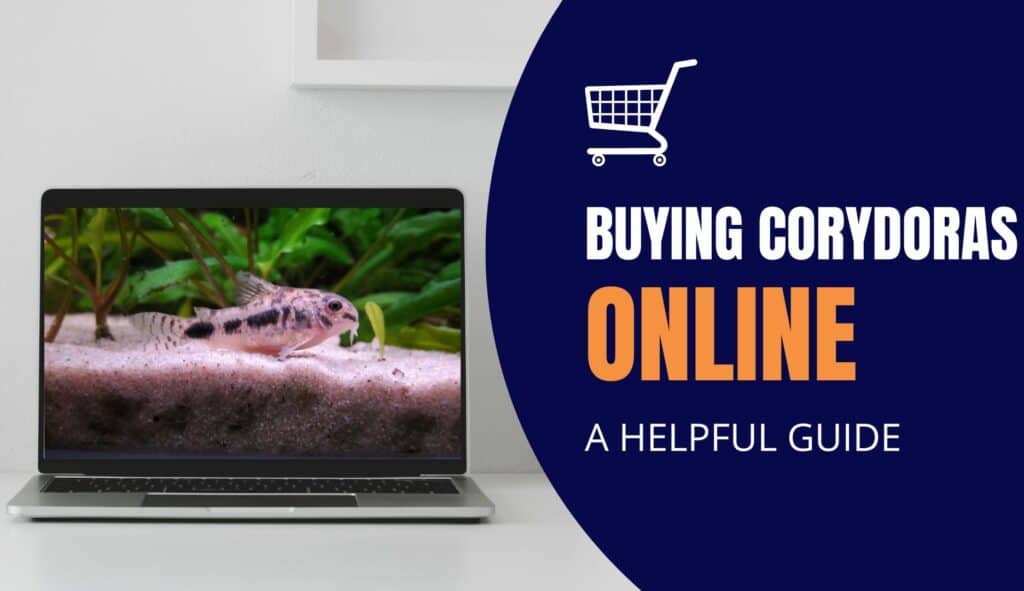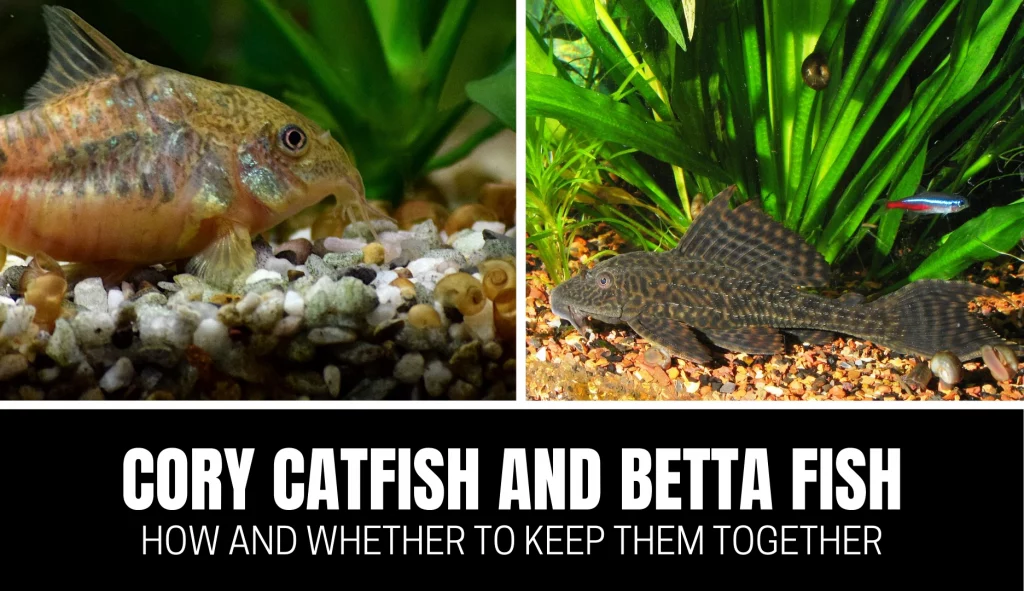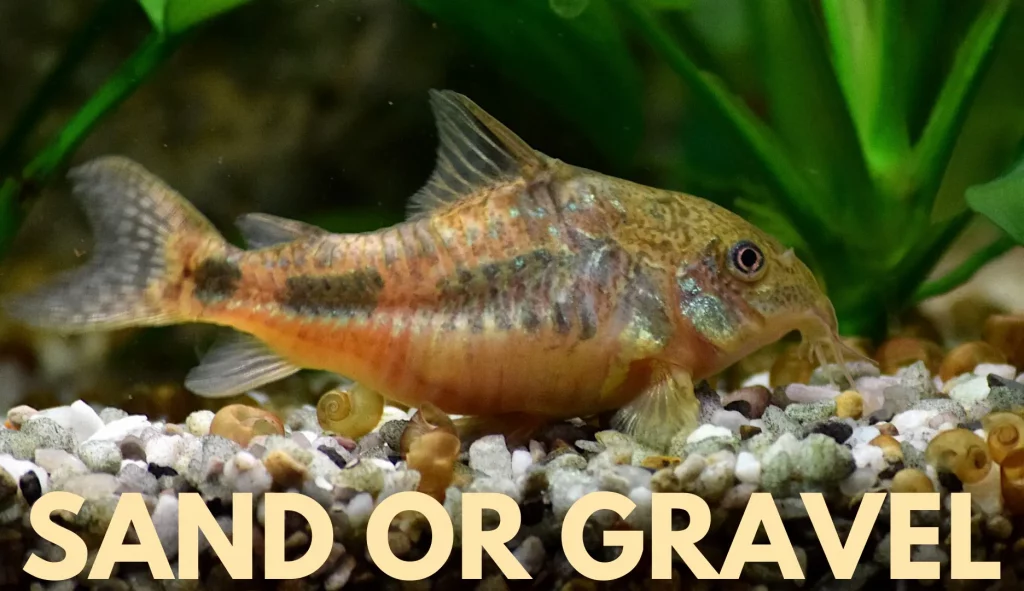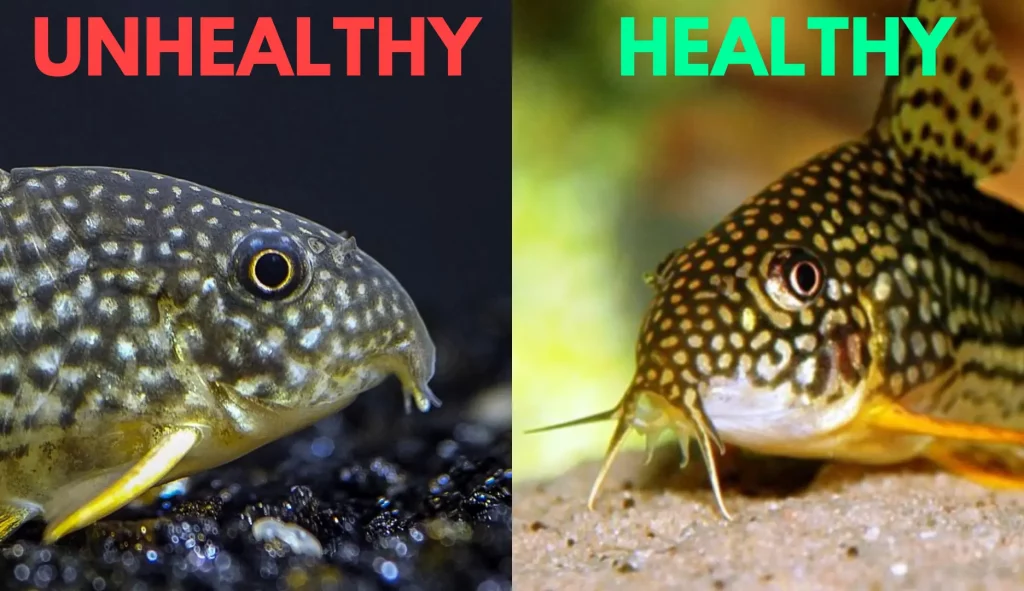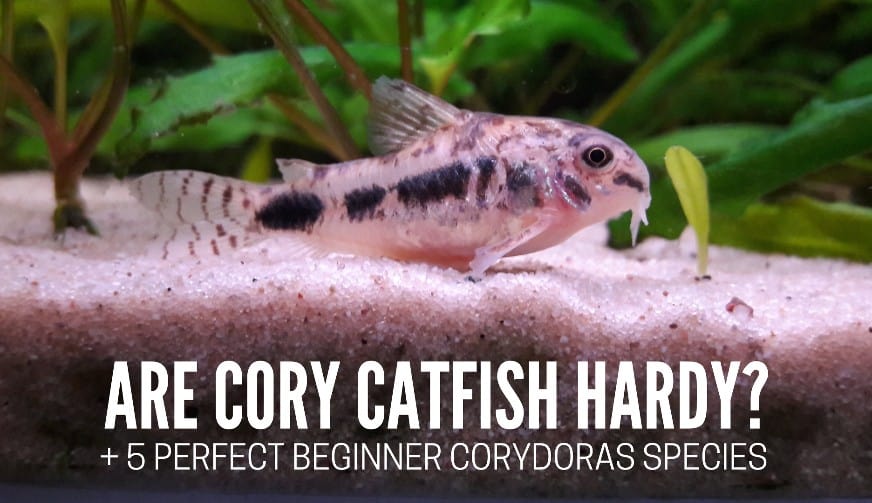Plecos dying: it’s a sad sight and one of the questions I get asked most frequently.
However, many times, the death of a plecostomus is avoidable by some simple changes in their care.
I’ll go over how to tell if your pleco is dying, the underlying causes of those symptoms, and how to prevent them from dying in the future.
Signs Your Pleco Is Sick and Dying
Often, it’s very hard to tell whether your pleco is sick or not. That’s because they’re quite withdrawn fish that don’t want to show when they’re sick (otherwise, predators will notice).
Here are some tips on how you can notice a sick pleco that’s possibly even dying.
PS: we have a full guide on pleco diseases. Read it here.
Infographic
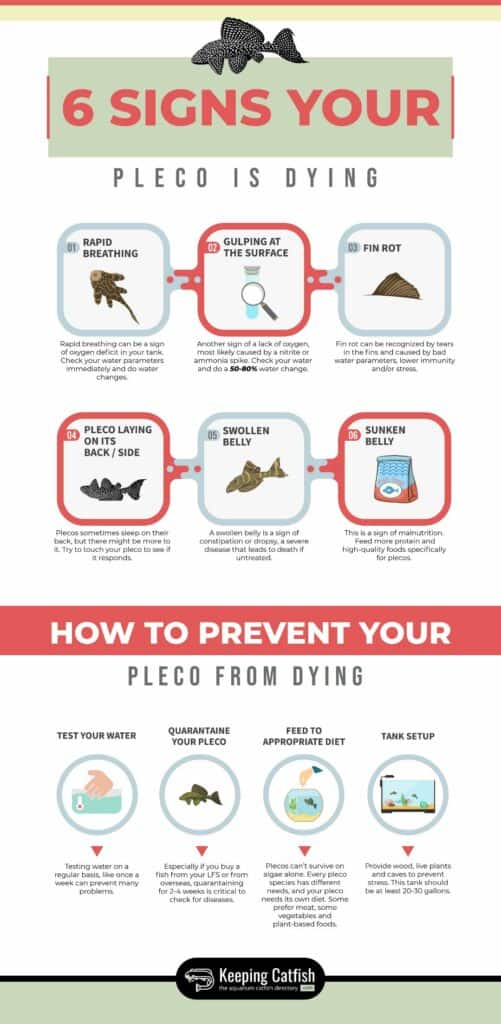
Gulping at the surface
If your pleco is gulping at the surface or swimming up and down the tank to reach for oxygen, this is a severe problem. Unlike cory catfish, which breathe air and for whom it’s normal to gulp air, plecos don’t normally do this.
If your pleco is gulping at the surface, it doesn’t have enough oxygen and is suffocating. An oxygen deficit can be caused by a nitrite/ammonia spike, high temperatures, or a broken filter. Take action by doing water changes and adding an air pump.
Especially because plecos love oxygen-rich water (they often live in fast-flowing streams and rivers) adding an airstone or pointing your filter outlet in a way that it creates bubbles is useful.
Cloudy eyes
Do you notice your pleco has no clear eyes, but a white milk-like color? Then it has cloudy eyes.
Although a cloudy eye most likely isn’t deadly, it is an indicator that something is wrong and should at least be examined. They’re caused by one of the following things:
- Physical damage
- Low immune system.
- Stress
If your pleco has a cloudy eye but acts normal, it will probably go away by itself. Cloudy eye is caused by bacteria and if your pleco is under stress, has had an injury, or lower immune system it can come up. Make sure to test your water if there are any abnormalities.
Laying on its back/side
It’s a quite common sight: a pleco laying on its back. Make sure to take notice of this behavior, and to check your water parameters to know whether there might be a cause for this.
Most of the time, a pleco laying on its back or side is normal as they sometimes rest in this position. If you are worried, you can try to move the pleco with your hands and see if it swims away. If this isn’t the case, check your water parameters for a nitrite spike.
If the pleco doesn’t respond to you moving it around but still breathes, you have to provide it will clean water as soon as possible and test your water.
Fin rot
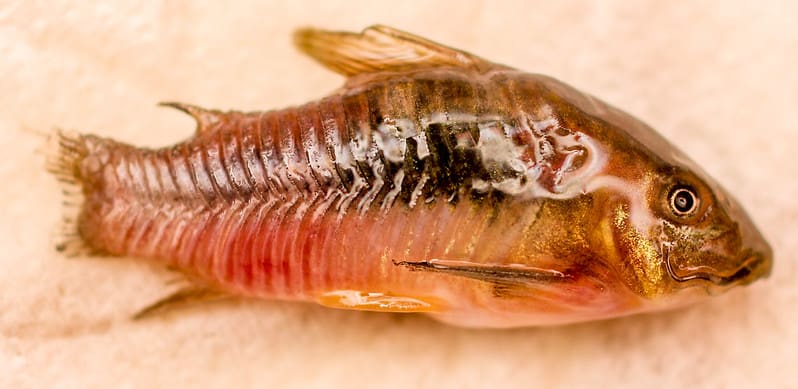
Fin rot is a common infection among aquarium fish.
If your pleco has seemingly rips/cuts in its fins, it’s most likely fin rot. This disease is not contagious but should be treated or death will follow. Check your water parameters as this is the most likely cause.
Rapid breathing
If your pleco is breathing more rapidly, it can be because of various reasons:
- Oxygen deficit
- Stress
- Excitement
- Breeding behavior
Make sure to test your water parameters for a nitrite/ammonia spike as this extracts oxygen. Add an airstone if your filter doesn’t create enough surface movement.
Because of excitement, plecos can also breathe more rapidly after a water change. This is of course innocent.
Lastly, before or during spawning, plecos can breathe more rapidly since this is energy-consuming.
Sunken belly
Noticing whether your pleco has a sunken in belly can be hard, especially if you don’t see it very often.
If your pleco has a sunken belly, it’s starving due to malnutrition. A pleco can’t survive off of algae and needs its own diet, apart from what you feed its tank mates. Depending on the species, feed a varied diet of both vegetables and protein-rich foods that sink to the bottom.
A sunken belly is the result of the gut flora dying off and even though these fish are very hardy, it will lead to death. Keep reading to know more.
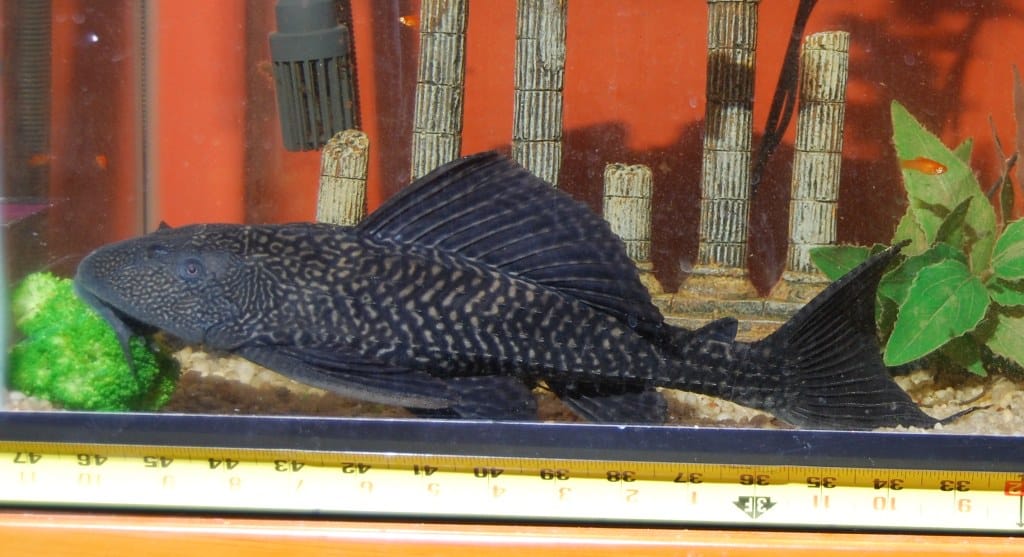
Huge plecos like this need A LOT of broccoli to survive ;).
Swollen belly
A swollen belly isn’t a good sign. There’s nothing wrong with a pleco than has a rounded belly (it’s in fact healthy) but if it looks bloated, this is bad.
A swollen belly with pleco catfish is caused by constipation or even worse, dropsy. Feed your pleco a varied diet, that meets the species’ needs.
Since plecos don’t have scales, it can be hard to know whether it’s dropsy or not. Later in this guide, we’ll go over the exact symptoms of dropsy.
Underlying causes for the death of plecos
Now that we’ve gone over the symptoms, it’s time to find the cause of these problems.
Ammonia/nitrite spike
An ammonia spike is one of the most likely causes of the sudden death of your pleco or other aquarium fish.
Ammonia, nitrite, and nitrate are three crucial parts of the nitrogen cycle of aquariums. This is the main reason why we cycle aquarium tanks.
If the “chain” is broken, this creates dangerous circumstances.

Nitrite is the most dangerous, and should always be at 0 ppm.
If you have a nitrite spike in your aquarium, it will make the fishes’ red blood cells unable to carry oxygen, leading to it suffocating.
Nitrate is considerably less dangerous, but should be lower than 30 ppm, and above 50 is the danger zone.
Starvation/malnutrition
As we’ve discussed briefly, starvation is a very common death cause of plecos.
Pet stores often sell plecos as algae eaters or cleaner fish which is why you might think it doesn’t need its own tank and can survive on leftovers/waste. This is absolutely not true.
Just like any other fish, a pleco needs its own specified diet. Foods that sink to the bottom where the plecos can eat them. Many plecos are omnivorous, meaning they need both plant-based foods and protein to thrive.
A lot of pleco types also benefit from driftwood in their tank. Scraping off small pieces and the biofilm growing on them is beneficial for their digestive system. Learn more.
Another result of starvation might be aggression, or your pleco sucking on the slime coat of fish like we sometimes see with goldfish.
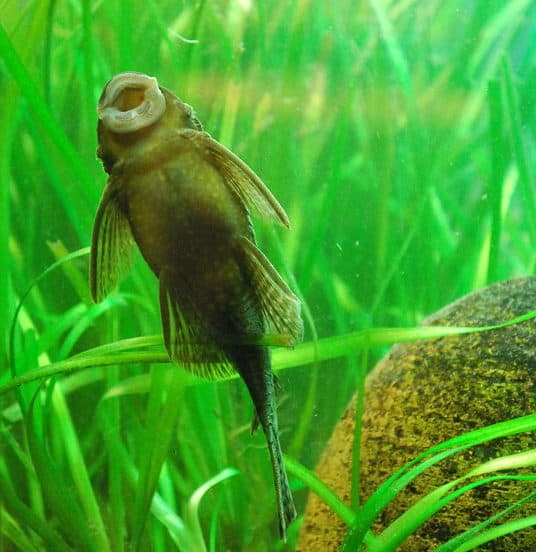
A healthy probably pregnant bristlenose pleco female.
Malnutrition can also lead to constipation, especially when too much protein is fed. Young animals are sensitive to too much protein.
Oxygen defecit
If you notice your pleco is breathing rapidly or gulping at the surface, it’s most likely because of an oxygen deficit. An oxygen deficit is caused by one of the following reasons:
- High temperatures
- Nitrite or ammonia spike
- No surface movement
- Overstocking
A lack of oxygen should be reacted to immediately with a big water change and the addition of an airstone.
Stress
When a pleco is stressed, it lowers its immunity and increases the risk of fast death.
It can hard to know whether your pleco is stressed, as they’re quite withdrawn fish.
However, a stressed pleco catfish can be recognized by a few things:
- Not moving a lot – If your pleco is always sitting at the same place, you might add some extra natural cover. Think about wood, pleco caves, and live plants. This will comfort the pleco.
- Not showing itself – Never seeing your pleco can be a bad sign. Unlike popular belief, plecos aren’t really nocturnal and are active during day time. If you want to know why your pleco is hiding often, and find solutions read this article.
- Changing color – Many types of plecos will become paler or lose their normal colors if stressed. This includes your pleco turning white. This is mostly temporary, but brighter colors usually mean a healthier fish.
A stressed pleco is most likely the result of an insufficient tank setup, bad water quality and or conflicts with other fish or plecos.
Fights because of aggression
In some circumstances, plecos can get really aggressive towards each other.
In some cases, it might even be as extreme as males killing each other.
Pleco males usually fight to assert dominance and defend their territory. Especially if they are in the breeding season.
Make sure to add plenty of caves and natural hiding spaces if you keep multiple males in the same tank. Having more females than males also helps.
Small anekdote: I have a tank of zebra plecos (L46) (the fish that costs $200+ a piece). One day, I was excited to see the male had trapped the female in a cave, so I was expecting some babies.
However, the next morning I waked up noticing the fish death in the cave. Turned out, that fish wasn't a female but the male had trapped the less dominant male and choked him (though there were plenty of caves). Ouwch.
How To Prevent Your Pleco From Dying
Now that we’ve gone over signs your pleco is dying, the most likely causes and solutions, it’s time to prevent it from happening in the future.
Diet for pleco catfish
I’ve put this first on the list because it’s probably the most frequently made a mistake. We’ve touched on the diet already, but here’s some more in-depth information.
There are three types of plecos:
- Carnivores – These plecos need a diet that’s entirely meat-based. Think about mussels and frozen foods. F.e., Hypancistrus plecos prefer meats, although they’re not 100% carnivores as they might benefit from occasionally getting plant-based foods.
- Omnivores – These plecos need a varied diet to thrive. The most known example is the bristlenose pleco, which needs about 80% plants and 20% meats.
- Herbivores – In the wild, these plecos will eat mostly algae and biofilm. The same goes for the carnivores: occasionally some protein isn’t a bad idea. Think about Panaque and Panaqolus sp.
Notice what pleco species you have
It frustrates me that when you look up information about plecos, people speak about plecos as one species. While in fact, there are hundreds.
While there are a lot of similarities between plecos types, there are also a lot of differences in terms of care.
A pleco dying is often the result of bad information and lack of knowhow about the species.
Tank setup improvements
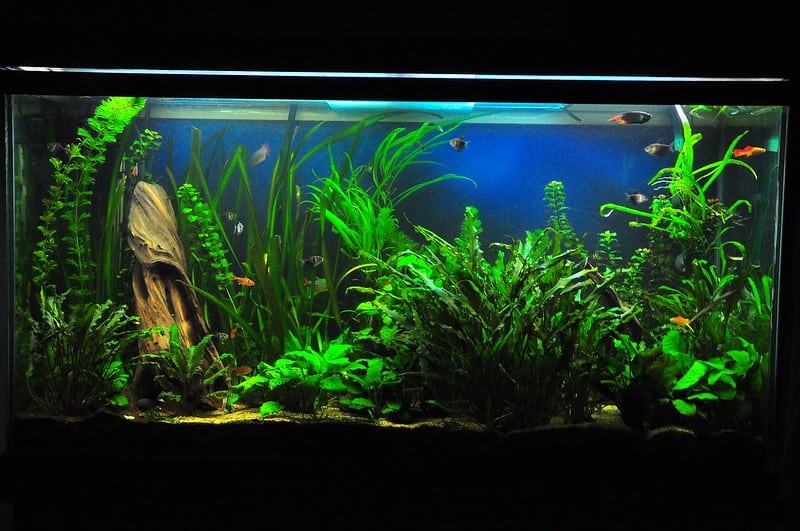
We’ve touched a little on improving the tank setup for your pleco catfish. Just like any other fish, they need a certain environment to feel good.
For plecos, most types need a tank that’s 30 gallons in size, but there are smaller species (like bristlenose & clown plecos) that can live in a 20-gallon tank.
Filtration is crucial to keep your water parameters optimal, as pleco catfish are big polluters. One of the biggest myths is also that plecos clean your tank. Unfortunately, this is not true.
Just as important is what you put in the tank. Plecos thrive in a tank setup with a variety of different natural covers, like pleco caves, stones, and driftwood.
If you want to know everything about setting up a pleco tank, you can read our full guide on it. Click here.
Quarantaine your plecos
Quarantining fish is one of the most forgotten things in the hobby.
Quarantining fish is putting them in a closed-off environment for a couple of weeks, before putting them in your main tank. This way, you can manage them and check for potential diseases.
You really don’t want to end up with a whole tank of death fish because you put in one sick fish…
Make sure to ask your fish store whether they have quarantined the fish already. The better stores will do, so in that case you don’t have to.
How to revive a dying pleco
To revive a dying pleco, perform a big water change and make sure the water parameters are optimal. Adding an oxygen source also helps. Make sure to find the cause so that you can add antibiotics if needed.
FAQ about plecos dying
Do plecos play dead?
Plecos aren’t known death, although they sometimes sleep on their backs which gives this impression. To test if your pleco is dead or not, you can try to touch it and see whether it reacts.
Do plecos float when they die?
Plecos aren’t known death, although they sometimes sleep on their backs which gives this impression. To test if your pleco is dead or not, you can try to touch it and see whether it reacts.


